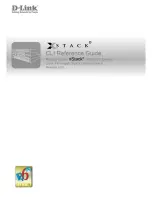
4–10
MULTINET4 MULTI-PORT SERIAL SERVER & MANAGED SWITCH – INSTRUCTION MANUAL
SYSTEM ADMINISTRATION
CHAPTER 4: SYSTEM ADMINISTRATION
The table below describes the parameters you can view and configure in the “SNMP:
Global Settings” screen.
Table 4–8: SNMP: Global Settings
Field Name
Field Value
Mode:
Enable or disable SNMP agent.
• Disabled – agent does not respond to queries.
• V1/V2 Enabled – agent only responds to v1 or v2c PDUs.
• V3 Enabled – agent only responds to v3 PDUs.
Default value = Disabled
Write Access:
Enable or disable write access to the MIB.
• Disabled – agent does not allow write access to the MIB.
• Enabled – agent allows write access to the MIB.
Default value = Disabled
Traps:
Enable or disable the sending of traps to configured trap
stations. Traps are event notifications sent by the agent to a
trap station.
• Disabled – agent does not send traps to the configured
trap stations.
• Enabled – agent sends traps to the configured trap
stations.
Default value = Disabled
Read Community String:
An arbitrary text string of up to 15 printable ASCII characters.
The community string sent by the SNMP client must match this
text for the MIB to be accessible for reading.
Write Community
String:
An arbitrary text string of up to 15 printable ASCII characters.
The community string sent by the SNMP client must match this
text for the MIB to be accessible for writing.
Engine ID:
A unique identifier assigned to this SNMP agent. You can
configure an engine ID that is a string 32 characters long. If you
do not configure an engine ID a 12-byte string will be assigned
as the default ID. The default ID is a unique value combining the
enterprise ID followed by MAC address or IP Address or plain
text.
The default engine ID for a Multinet4 device is as follows:
• The first four octets of the Enterprise ID(39cd).
• The fifth octet is a format identifier, which is 03 for MAC
address.
• Six to eleven octets of MAC address.
• The remainder (up to the twelfth octet) is filled by zeroes.
















































